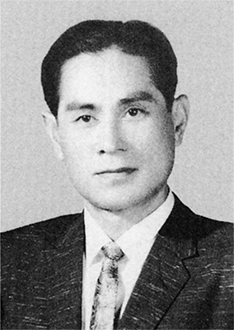God’s ideal of creation cannot be fulfilled merely by forming a world without sin. God blessed human beings to have dominion over the universe (Gen. 1:28). We are to seek for the hidden laws of nature and advance science and technology to create a pleasant living environment.
Religion and science have shouldered their respective responsibilities for helping fallen people overcome the internal and external aspects of their ignorance.
Therefore, in the Last Days of history, we can expect not only the emergence of a truth which can guide people to completely alleviate their spiritual ignorance; we may also expect the progress of science to solve all the mysteries of the physical universe (cf. Eschatology 4.3).
Together, they will bring human society to the stage just prior to the realization of the ideal world. Thus, we can understand that the Industrial Revolution which began in England arose out of God’s providence to restore the living environment to one suitable for the ideal world.
The economic structure of the ideal society also resembles the structure of a healthy human body. Production, distribution and consumption should have an organic, interdependent relationship such as that which exists between the digestive, circulatory and metabolic systems. There should not be destructive competition due to overproduction; nor should there be excessive accumulation or overconsumption due to unfair distribution, which would be contrary to the welfare of all people. There should be adequate production of necessary and useful goods, fair distribution to supply what is sufficient for people’s needs, and reasonable consumption in harmony with the purpose of the whole.
The mass production born of the Industrial Revolution led England to claim vast colonies as sources of raw materials and markets for goods. In so doing, the Industrial Revolution opened up a vast territory for the propagation of the Gospel.
Accordingly, it contributed to both the internal and external aspects of the providence of restoration.
The Rise of the Great Powers
We have seen how after the Renaissance, the unitary worldview of medieval Europe was divided into Cain- and Abel-type views of life. These gave rise to two types of political revolutions and founded two types of democracies, both of which were greatly strengthened as a result of the Industrial Revolution. The two types of democracies were on the course to form the democratic and the communist worlds.
Following the Industrial Revolution, spurred by the rapid progress of science, industrialization created economies characterized by overproduction. The great powers of Europe, which felt an urgent need to pioneer new lands as markets for their products and as sources of raw materials for their factories, grew strong as they competed with each other in the scramble for colonies. Thus, two factors – the two trends in ideology and the course of economic development following the progress of science – caused the later political division of the world into two blocs: the democratic world and the communist world.
Religious Reforms and Political and Industrial Revolutions since the Renaissance
The Cain-type movement which began with the revival of Hellenism overthrew the medieval world and gave birth to the humanism of the Renaissance. As this movement developed further, moving in Satan’s direction, it gave birth to the Enlightenment, which may be regarded as the second renaissance in the current of ideology. Enlightenment thought further matured in the satanic direction, giving birth to historical materialism, which is the core of communist ideology. This may be regarded as the third renaissance.
Since the satanic side mimics in advance the providence of God, we may expect that God’s providence calls for three stages of revolution to take place in each of the three spheres of religion, politics and economy. In the sphere of religion, the first reformation took place under Martin Luther’s leadership after the first renaissance. A second reformation was launched after the second renaissance by the spiritual movements led by people such as the Wesley brothers, Fox and Swedenborg. From our examination of the progress of history, it is evident that a third reformation will occur following the third renaissance. Indeed, the state of today’s Christianity desperately calls for such a reformation.
In the political sphere, we can surmise that reform also is taking place in three stages. First, medieval feudal society collapsed under the weight of the first renaissance and the first reformation. Next, absolute monarchy was destroyed by the forces unleashed by the Second Renaissance and the Second Reformation.
Finally, the communist world was formed by the political revolutions brought on by the Third Renaissance. Through the coming third religious reformation, the democratic world on God’s side will triumph in the ideological war and bring the communist world on Satan’s side to its knees. Then the two worlds will unite into one Kingdom of Heaven on earth under God.
The economic changes which follow the religious and political reforms have been progressing in three industrial revolutions. The first Industrial Revolution originated in England and was based on the steam engine. A century later, the second Industrial Revolution took place in many advanced nations based on electricity and the gasoline engine.
The third Industrial Revolution will flower by safely tapping the power of the atom; it will construct a pleasant living environment for the ideal world. In the centuries of preparation prior to the Second Advent of the Messiah, the three stages of revolutions in the three spheres of religion, politics and industry, which followed the three renaissances, have been a necessary course for the construction of the ideal world, as required by the principle of development through three stages.




